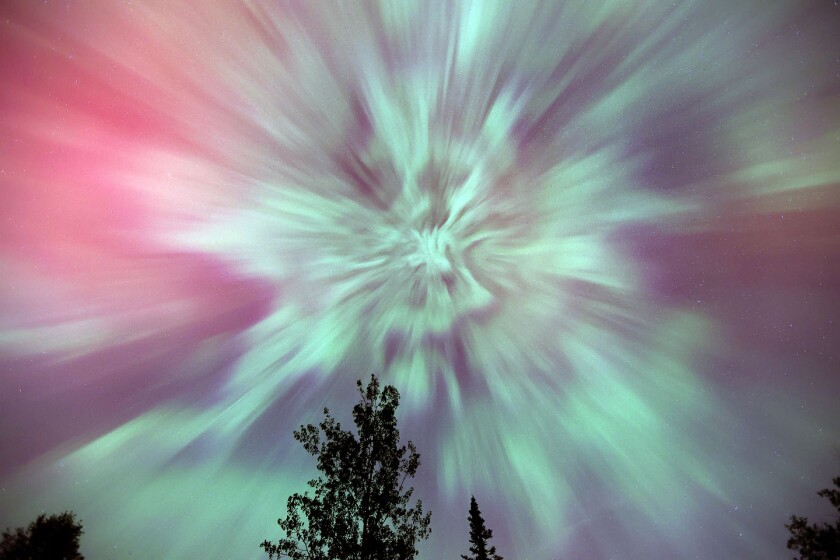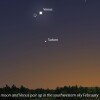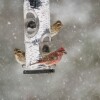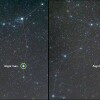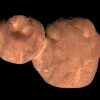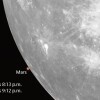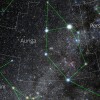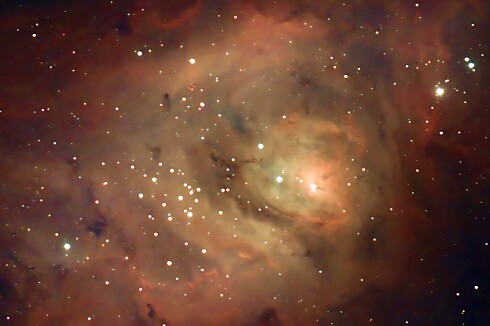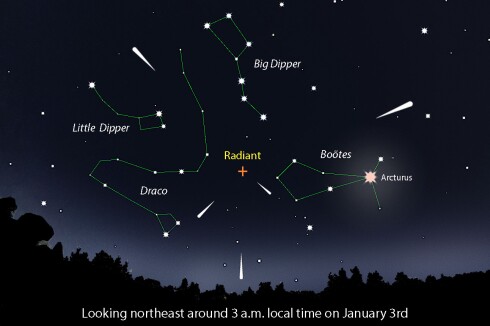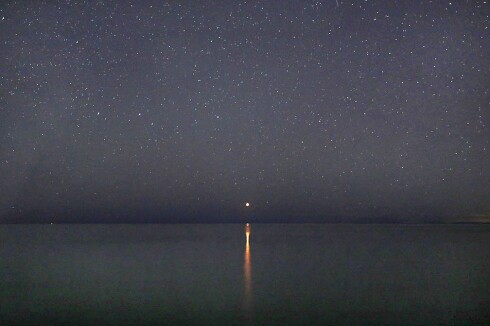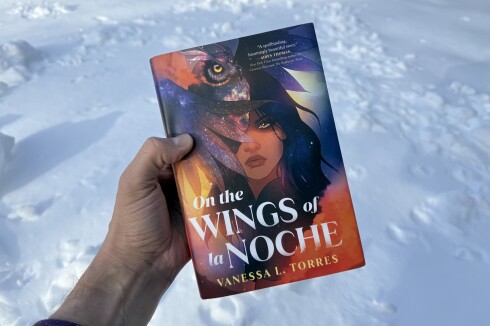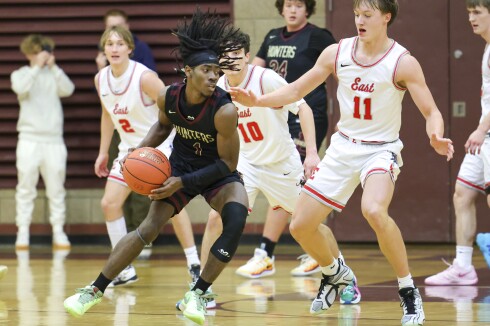On Oct. 1, the sun unleashed a strong solar flare that propelled a gale of high-speed particles in Earth's direction. Astronomers expect the blast to arrive sometime Thursday afternoon, Oct. 3, and persist into the night. Should the forecast hold, we can expect to see a wild display of the northern lights Thursday night beginning as early as dusk.
Solar storms are rated according to their impact both high above our heads where the northern lights dance, and closer to home where satellites and poorly protected electrical grids can be affected. Thursday's storm is predicted to be a strong one, rated G3.
ADVERTISEMENT
For northern Minnesota, that means aurora spilling beyond the overhead point into the southern sky. Farther south, in Illinois and Iowa, for example, observers will also see the aurora, although primarily in the northern sky.
Storm levels are rated from G1 (minor), which are relatively common, to G5 (extreme). The last G5 storm to visit the region was the super-spectacular display last May. This one won't quite reach that level but it should offer lots of color and action. And how fortunate that the moon is just a crescent and won't spoil the show.
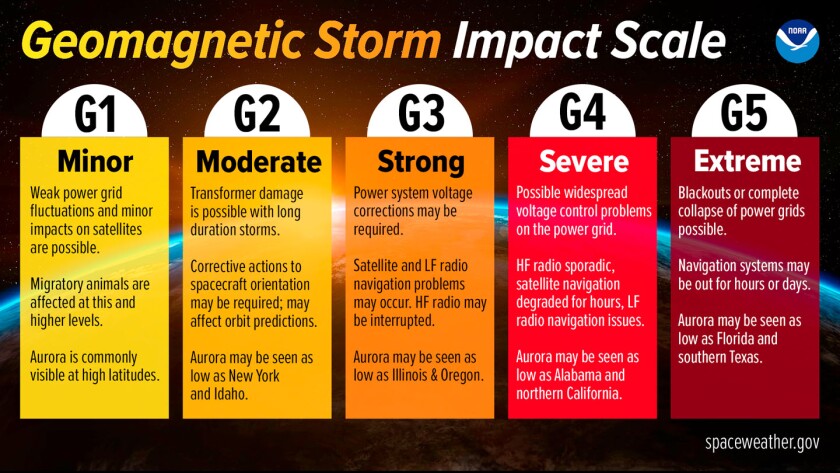
Should the forecast hold, the aurora will appear in the northern sky as early as dusk. If you're in the Duluth region you can start looking as soon as 8 p.m. Activity will intensify through twilight into the early evening and then ramp up to a full G3 storm between about 9 p.m. and 1 a.m.
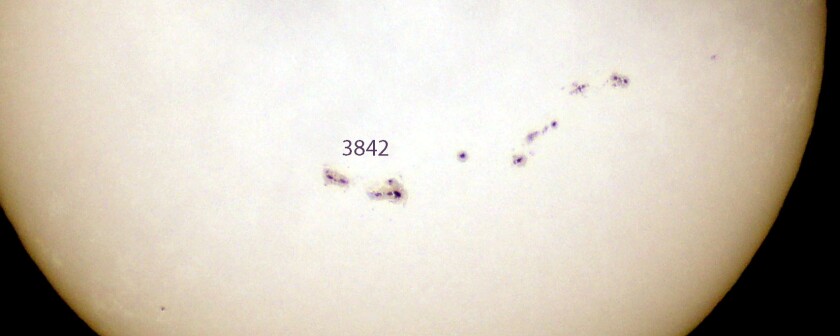
To see it best, find a location with a dark, light pollution-free northern sky. That's the most important direction. Remember to be patient. The aurora follows its own schedule and sometimes takes a while to "get cooking." As long as activity — brightness, motion, etc. — trends upward, it's worth your while to stick around. I will post updates at facebook.com/astrobobking. Stop by and leave a comment or share a photo.
Smartphones work surprisingly well for northern lights photography. If you have an iPhone, just point it at the sky. It automatically puts itself in night mode and allows the user to take 3-second hand-held time exposures. That's plenty of time to capture most auroras. For an Android phone, set it to night mode.
If you miss Thursday's aurora, the storm will continue to rumble on all the way through Friday, Oct. 4. It reaches the G2 level early, so be ready to spring into action as soon as it gets dark.
Get this: An even larger solar flare erupted Thursday, Oct. 3, so we may be in line for yet another major aurora soon. What a year it's been for aurora-watchers.
ADVERTISEMENT
To learn more about the northern lights, you can buy my book, "Magnificent Aurora," just published this fall. Contact me at duluthaurora@gmail.com to get a signed copy or stop by The Bookstore At Fitger's. I'll also be signing books there from noon to 2 p.m. Saturday, Oct. 12.
OK, now cross our fingers and hope everything happens according to plan!

